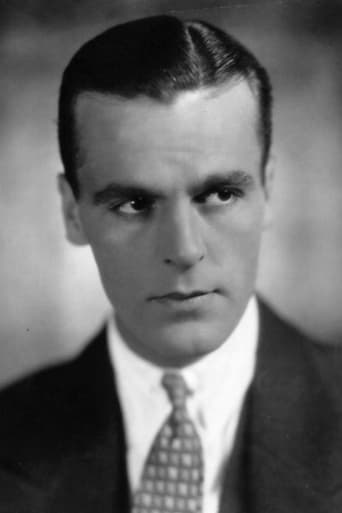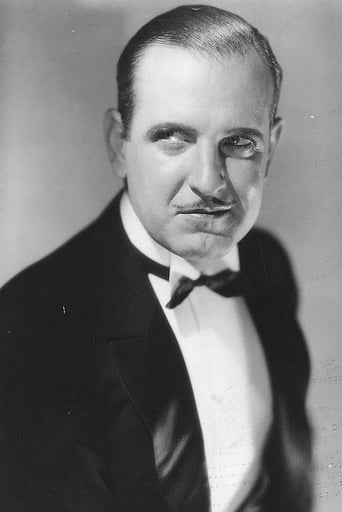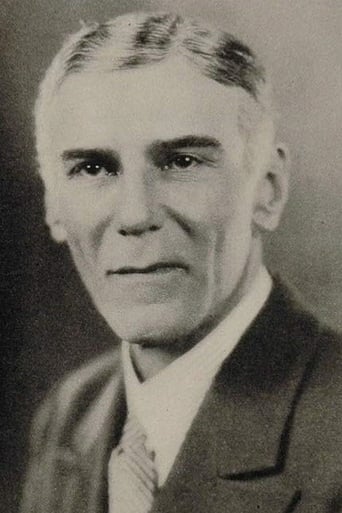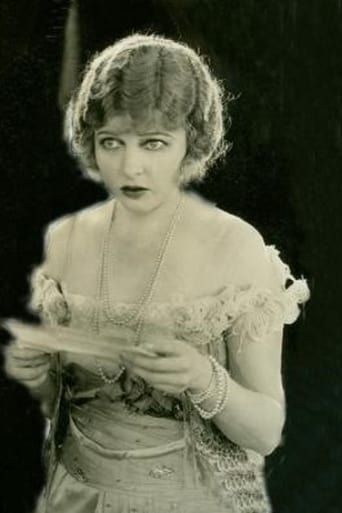Artivels
Undescribable Perfection
ChicRawIdol
A brilliant film that helped define a genre
Humaira Grant
It’s not bad or unwatchable but despite the amplitude of the spectacle, the end result is underwhelming.
Verity Robins
Great movie. Not sure what people expected but I found it highly entertaining.
Richard Chatten
The plot of this deceptively overlooked little trifle is the usual nonsense about a sweet young lass whose path crosses that of one of those personable young millionaires with entirely honourable intentions you find behind every corner in the silents, only to be entirely falsely suspected of being a gold-digging little hussy by his disapproving family. But 'The Love Trap' proves fascinating historically both as a relic of the "part-talkie" era and for its adroit staging by the up-and-coming young William Wyler feeling his way towards his mature style.The first two thirds of this fluff has attractive performances in the leads by Laura La Plante and Neil Hamilton, while Wyler is already visibly attempting to find ways of extending the boundaries of the cinema screen through frequent use of pans and attempts at composition in depth. In his talkies Wyler abandoned the pans, which tend to jar at times, but with the great Gregg Toland behind the camera eventually came second only to Orson Welles as the 1940s' master of deep focus composition in 'The Best Years of Our Lives' (1946), which veteran cameraman Gilbert Warrenton had done his best to achieve in 'The Love Trap' with the limited resources then at his disposal.Then suddenly everybody starts talking! The early scenes had all carried a Vitaphone soundtrack, and 'The Love Trap' had evidently started life as a silent, since there are scenes in which people speak dialogue which the makers haven't bothered to caption, as they'd presumably decided the film was going to go into release as a part-talkie and thus elected to keep titles to the minimum in scenes where the audience would be able to get the gist without them.At this point the film seems on the verge of turning all serious on us, but happily opts instead for saucy pre-Code farce, in which Miss La Plante - mostly dressed only in her scanties - effortlessly and charmingly leaps the daunting hurdle of suddenly starring in a talkie.
secondtake
The Love Trap (1929)I wouldn't have troubled with this film except that it's by the most decorated and honored of Hollywood's directors, William Wyler. And the short answer on the film is that it's very good, worth watching.It surprised me by being silent. Twice. That is, it begins with some scenes that involve music and there is a soundtrack synched to the movie--but not recorded when the visuals were shot. So the dialog is all silent with an occasional intertitle card. The reason for this is just that Universal Studios hadn't yet switched to doing sound. This was released in 1929, and "The Jazz Singer" was 1927, so this shows how it took some time for the smaller studios to switch over.Further--like "The Jazz Singer" this one has a few sections with actual synched sound. It comes as a huge surprise, and it raises the movie to another level in its entirety. You can almost apply their voices by extension to the rest of the movie. Even so, it's a sophisticated film--including the sound that is used, both music and some sound effects. The filming is excellent, but what really stands out is the superb acting--which of course is what Wyler would in part become famous for. The story is a simple one but a pre-code risqué one. A woman who needs money to pay her rent goes to a rich man's party to make a few bucks. And she's expected, somehow, to be available to one of the men, who tricks her, in all her innocence, to a bedroom. So then it becomes a tale of morality versus money. And told almost entirely with gesture and expression. And filmed beautifully, with some absolute surprising turns in the plot. The last thirty seconds will seem a little convenient, but the rest of it--a real treat!
Steffi_P
The Love Trap is one of a many "part-talkies" that were produced during the transition period between the silent and sound eras. As sound was still relatively expensive and still excitingly new, the talkie segment in these features was usually a gimmick for the final scenes, not necessarily adding or taking away anything from the picture, but helping to draw the crowds. Today these pictures provide us with a chance to see directly the contrast between the final days of silent cinema and the first faltering steps of the talkies.The director here is William Wyler, shooting one of his earliest full-length features. Wyler would later have the distinction of directing more Oscar-nominated acting performances than anyone else (thirty-three), a record still held by him today. In particular, he had a reputation for coaxing fine performances from actors who never showed talent anywhere else. Laura La Plante was not an especially distinguished actress, yet here she is first class. Perhaps the most crucial thing a director can do to help their cast, other than good coaching, is simply giving them time and space to act, and this is precisely what Wyler does for La Plante. In the opening scenes, when she is fired from the chorus line and flees to her dressing room, she is held for a few moments in mid-shot, forcing the audience to focus on her emoting. The scene in which she is kicked out on the street along with all her furniture could easily have been played for laughs, but again the camera concentrates on La Plante, and her expression is painfully real.This generous manner of filming the leading lady, and the commendable performance it captures, have a wider impact on the picture as a whole. Firstly, it helps bring out the story visually by subtly yet convincingly bringing out the character's thoughts and feelings – something which is complimented by the relatively low frequency of intertitles. Furthermore, Wyler avoids the trap of many male directors when shooting a story where a woman is the protagonist, which is to focus too much on the lead man, and show us his point of view rather than hers. Instead he makes it absolutely clear that this is her story, not Neil Hamilton's. Finally, by making the emotions of the main character appear real, and forcing the audience to take notice of them, he elevates The Love Trap above the simple romcom that it is on paper. It's just a shame there isn't quite enough substance to the screenplay for this to pay off.The talkie section of The Love Trap begins, ironically, with several seconds of silence as Hamilton confronts his family. This adds dramatic weight to the moment, and gives more impact to the dialogue when it begins. The power of silent moments had, again ironically, never been realised in the silent era as pictures had a continual musical backing. The sound scenes here still retain the flow, style and strong performances of the rest of the picture, and do not stand out as being awkward, as early talkies often were.By their very nature, the part-talkies were usually potboilers, since by now all the more prestigious picture would be all-talking. However, thanks in no small part to Wyler's sensitive direction, The Love Trap is well above the average. Laura La Plante's career would begin to peter out soon after, and Neil Hamilton wound up as a supporting player in numerous TV series, but here they are both excellent. Wyler himself would go on to win three Academy Awards, and direct some of the greatest stars of Hollywood's golden age in the greatest performances of their career.
dfree30684
I just viewed this early William Wyler directed comedy-drama and discovered that leading lady Laura La Plante (Evelyn) co-starred in 2 silent/talkies in 1929. The other was the first sound version of SHOWBOAT as Magnolia. I'd really like to know why the first 43 minutes or so is silent (with a continuous, distracting musical soundtrack) and the last 25 minutes has dialogue.As a result, the performances, for the most part fluid in the silent portions, become rushed and choppy. The storyline follows La Plante as an unemployed chorus girl in New York, who suffers thru a series of misfortunes until fate puts her in the arms of Neil Hamilton (Peter) , who's a rich guy. The tale switches to light comedy, as the two fall in love and marry...then it's back to melodrama as Hamilton's stuffy mom and uncle (Norman Trevor) feel the young man has married beneath his station. The title could be both from his family's assumption the poor girl 'trapped' Peter (Hamilton) into marriage or how she sets a trap for his uncle to free her of a secret they share.At no time a masterpiece...Hamilton's performance is generally fine; La Plante is too cutesy and Wyler's direction shows a brief flash of brilliance to come...note: how we learn the butler and Peter's younger sister Mary (a too brief appearance by a beautiful Rita La Roy) are indeed an item. But, at 69 minutes...it's not a waste for the curious.





